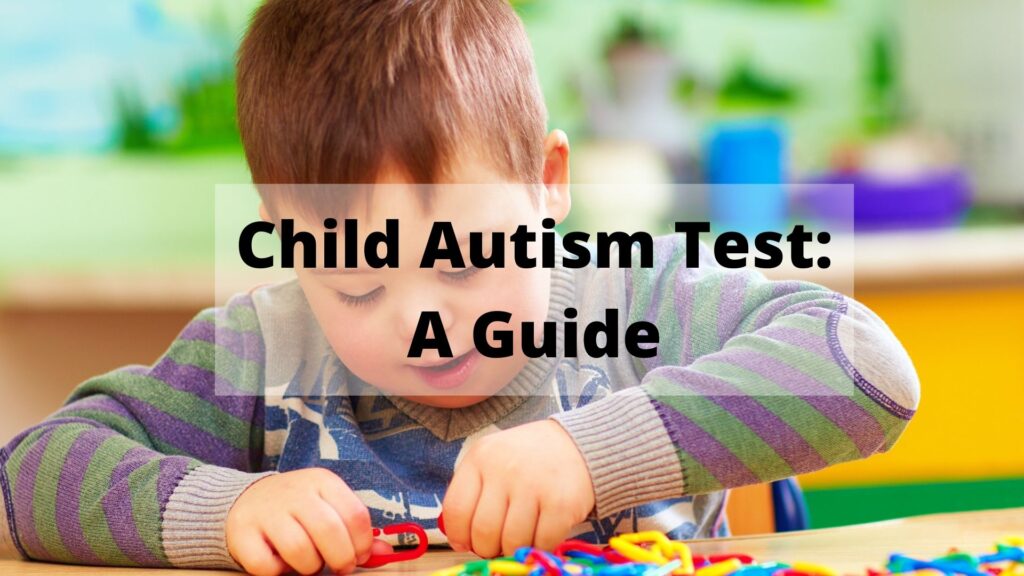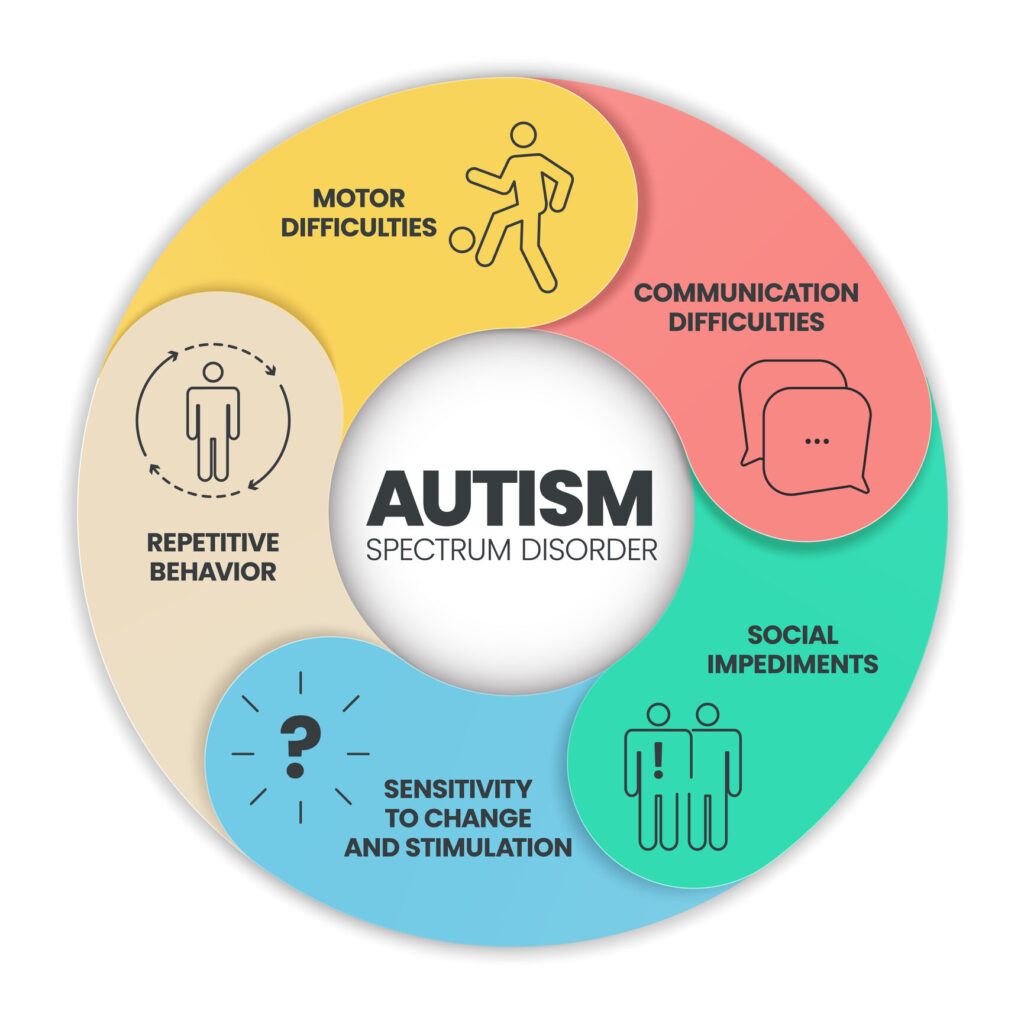Introduction:

Recognizing and addressing the possibility of autism in your child is a crucial step toward providing the necessary support and understanding. If you’ve observed behaviors that raise concerns, it’s important to take proactive steps to get your child tested for autism. This article outlines a comprehensive guide to help parents navigate the process, from seeking advice to managing wait times.
1. Talk to Someone for Advice

The first step in getting your child tested for autism is to reach out to professionals who can provide guidance. Consider talking to:
- General Practitioner (GP): Schedule an appointment with your family doctor to discuss your concerns. GPs can offer initial insights and guide you toward the appropriate assessments.
- Therapist or Counselor: Seek advice from a mental health professional who specializes in child development or autism. They can provide valuable insights and may be able to recommend specific assessments.
- Special Educational Needs Coordinator (SENDCO) at School: If your child is in school, consult with the school’s SENDCO. They can share observations from an educational perspective and guide you on the next steps.
2. List Signs of Autism Your Child Has:

When considering whether your child may be exhibiting signs of autism spectrum disorder (ASD), it’s essential to observe a range of behaviors that may indicate challenges in social communication, interaction, and other areas. Here are specific signs to look for:
- Social Challenges:
- Limited Eye Contact: Difficulty making or maintaining eye contact during interactions.
- Lack of Interest in Peers: A preference for solitary play and limited engagement with other children.
- Challenges in Reciprocal Conversations: Difficulty in engaging in back-and-forth conversations, with limited sharing of interests or emotions.
- Communication Difficulties:
- Delayed Speech and Language Development: Slow to develop spoken language, limited vocabulary, or challenges in articulation.
- Repetitive Language Use: Repeating words or phrases without clear communicative intent.
- Limited Nonverbal Communication: Difficulty using gestures, facial expressions, and body language to enhance communication.
- Repetitive Behaviors:
- Repetitive Movements: Engaging in repetitive body movements, such as hand-flapping, rocking, or spinning objects.
- Insistence on Routine: Strong resistance to changes in routines, displaying distress when faced with unexpected transitions.
- Sensory Sensitivities:
- Hyper- or Hypo-sensitivity: Unusual reactions to sensory stimuli, such as heightened sensitivity to lights, sounds, textures, or a lack of response to pain.
- Specific Interests: Intense focus on specific topics or objects, often to the exclusion of other activities.
- Social Imagination and Play:
- Limited Pretend Play: Difficulty engaging in imaginative or pretend play, preferring literal and concrete activities.
- Challenges in Understanding Emotions: Difficulty recognizing and understanding the emotions of others, leading to challenges in empathizing.
- Motor Skills:
- Motor Coordination Challenges: Difficulty with fine or gross motor skills, which may affect activities like writing, tying shoelaces, or catching a ball.
It’s important to note that every child is unique, and the presence of one or more of these signs does not necessarily indicate autism. However, if you notice a cluster of these behaviors persisting over time and impacting your child’s social, academic, or daily functioning, seeking professional advice for an autism test becomes crucial.
Remember that early intervention is key, and the signs mentioned above are not exhaustive. If you have concerns about your child’s development, consult with healthcare professionals, educators, and specialists who can provide a comprehensive assessment to better understand your child’s needs
3. Pathways to Getting an Autism Diagnosis

There are different pathways to obtaining an autism diagnosis, including:
- SCD Pathway (Social Communication Disorder Pathway): This pathway focuses on social communication difficulties and is often the starting point for younger children. It involves assessments by healthcare professionals, psychologists, and speech and language therapists.
- CAMHS Pathway (Child and Adolescent Mental Health Services): CAMHS provides mental health services for children and adolescents. The pathway involves assessments by a team of professionals, including psychiatrists, psychologists, and other specialists.
- Adult Autism Assessment: For older individuals, including teenagers and adults, there are specific pathways for autism assessment. This may involve consultations with mental health professionals, psychologists, and specialists in adult autism services.
4. How a Diagnosis Can Help:

A formal diagnosis of autism spectrum disorder (ASD) can provide several benefits:
- Access to Support Services: A diagnosis opens the door to various support services, including educational accommodations, therapy, and community resources tailored to the needs of individuals with autism.
- Understanding and Acceptance: A diagnosis fosters a better understanding of your child’s strengths and challenges, promoting acceptance and a more supportive environment at home and in the community.
- Guidance for Interventions: A diagnosis guides the development of personalized interventions and strategies to help your child thrive in various aspects of life, including education, social interactions, and daily routines.
5. What to Do During Wait Times:

The process of getting an autism diagnosis may involve wait times for assessments and appointments. To make the most of this period:
- Educate Yourself: Learn more about autism spectrum disorder, its characteristics, and available interventions. This knowledge will empower you to support your child effectively.
- Seek Support: Connect with local autism support groups or online communities to share experiences, gain insights, and receive emotional support from others who have gone through similar journeys.
- Document Your Child’s Progress: Keep a journal documenting your child’s behaviors, achievements, and challenges. This information can be valuable during assessments and consultations.
In conclusion, taking the steps to get your child tested for autism is an important and proactive decision. By seeking advice, identifying signs, navigating assessment pathways, understanding the benefits of a diagnosis, and managing wait times effectively, you are paving the way for your child to receive the support and understanding they need to thrive. Remember that every child is unique, and an autism test is just the first step in a journey toward a more informed and supportive future.


One thought on “Navigating the Path to Getting Your Child An Autism Test”